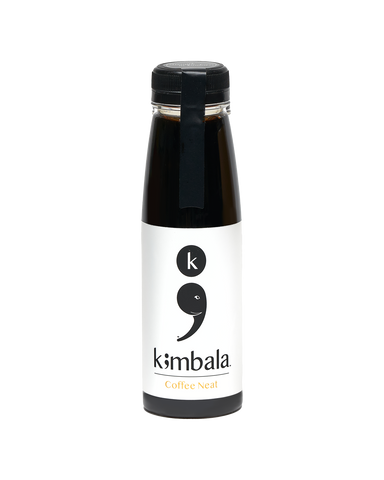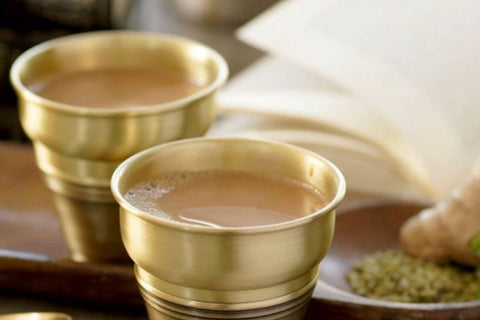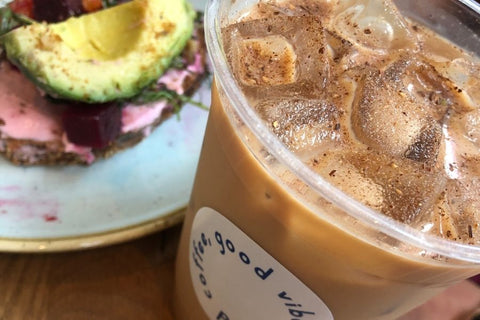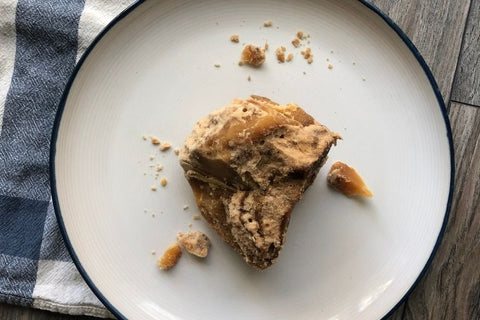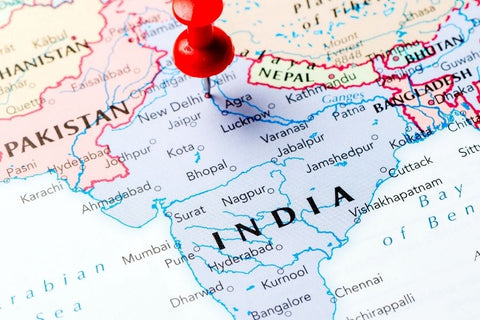Tags:
chai
chai 101
Tea
Chai for the people of India is an eternal love; consumed by 80% of the Indian population on a daily basis, this deeply respected beverage is the second most commonly offered beverage when visiting someone’s home.
Chai is a humble agent of social interaction - sitting amongst friends, family or acquaintances with a chai in hand leads to endless discussions about politics, gossip, advice on any topic, and even marriage proposals.
Kimbala Founder, Madhu, was born and raised in India and is an avid chai drinker. His passion for the beverage lead him to the founding of Kimbala, so he could help others experience and share in his love for authentic chai. For Madhu, Chai is so much more than just a cup of tea. Within each cup there is history, perseverance, culture, tradition, and love. When it comes to authenticity of chai, it's important to first note the proper terminology.
What is Chai and why saying “Chai Tea”, is incorrect
When we speak about chai, it is important to know we are not referring to a loose leaf tea but instead speaking of a composed beverage traditionally made from combining black tea, spices, milk, and sugar. A drink that represents a way of life in India.
In Hindi, a primary language in India, the word chai literally means, “tea”. Chai is derived from the Chinese word, “cha” that also means “tea”. In the United States the phrase “chai tea” has become the common name for what should be referred to simply as chai, or masala chai.
The word “masala” translates to “spice” in Hindi; when combined with the word chai, the literal translation is “spice tea.”
Anyone confused yet?! Let’s recap and simplify:
- CHAI = tea → this is the proper name for the traditional beverage that combines black tea, spices, milk, and sugar (could also be called, Indian Chai)
- MASALA CHAI = spice tea → this is another proper name for the traditional beverage that combines black tea, spices, milk, and sugar
- CHAI TEA = translates to “tea tea” → a phrase created by American consumers and validated by Starbucks, Oprah, major chai concentrate brands and specialty coffee shops around the USA.
The origins of Chai
As one of the oldest drinks in history and the most famous beverage in India, the origins are steeped in legend and some accounts of its roots are contradictory. The earliest chai did not contain any tea leaves and depending on the seasons and available ingredients, the recipes would differ.
Based on Indian folklore, a spiced beverage was concocted by a king in the royal court of India. This king wanted to create a drink with healing, Ayurvedic (a very traditional form of Hindu medicine) properties and gathered ingredients based on their known benefits. The result was a water based elixir that combined cardamom, cinnamon, black pepper, ginger, and cloves. There are other stories and beliefs around chai's origin, which can be found in further detail in a recent post on chai's history and stories of origin from the Kimbala blog.
Must have components of Chai
There is not one single, absolute recipe for chai. Regions and communities of India have developed chai recipes based on spice availability and their unique tastes and preferences. At the core of chai, however, the following (4) components will always be present:
- TEA: Black tea from Assam and Darjeeling are the (2) most common choices for brewing chai. Rooibos may be used to brew a caffeine free option.
- SPICES: The selection of spices (“masala”) used in chai will vary by region, climate and cultural preference. The most traditional and readily available in India are cinnamon, cardamom, clove, black peppercorn, and ginger. You may also see nutmeg, fennel, star anise, or vanilla in some recipes.
- MILK: In India buffalo milk may commonly be used, as well as a pure whole cow’s milk. Milk in India is less processed than what we find in the US and yields a thicker, creamier consistency for the chai. Some recipes may call for steeping the tea in milk only, water only with milk added afterward, or a mixture of milk and water. No matter the type of liquid, boiling the mixture of tea and spices is a MUST!
- SUGAR: Jaggery (an unrefined sugar native to India) or white sugar are the most common sweeteners added to chai. You may also see turbinado, coconut sugar, or sweetened condensed milk added to make chai complete.
How much caffeine is in a cup of Chai?
Caffeine content is one of the most common questions we hear from Kimbala customers. This seemingly invisible ingredient is indispensable for many of our morning routines in order to kickstart the day. Whether you typically get your caffeine kick from coffee or tea, chai is a healthy, clean option to consider to help you keep that pep in your step throughout the day.
In general, there are many factors that affect the caffeine content of tea:
According to Tuula Vintage, for a 237ml (about 8oz) cup of tea from Assam, you can expect anywhere between 60-112mg of caffeine depending how long it was steeped.
Considering the steeping time associated with chai, you can estimate 85-90mg caffeine per 8oz. Let’s assume 90mg per 8oz of chai and take a look at what the caffeine content would be for a few other portion sizes in comparison to coffee:
| Serving Size | Chai | Coffee |
| 8oz | 90mg | 95mg |
| 10oz | 112.5mg | 118.75mg |
| 12oz | 135mg | 142.5mg |
| 16oz | 180mg | 190mg |
It is typical in India to enjoy a 4oz cup of chai multiple times throughout the day. This smaller portion does not overwhelm your body with caffeine but still provides the pick me up you may need. Many correlate beverages made with tea to having much less caffeine than coffee but as we just learned above, and particularly with black tea from Assam, the caffeine levels are very similar!
For those who want to enjoy chai without the caffeine, Rooibos tea is the perfect substitute and still maintains a delightful taste and sensory experience. When using Rooibos, adding spices (masala) that are on the simpler side will be a better pairing: cardamom, nutmeg, cinnamon in balanced proportion.
Types of Chai
There are several types of chai, giving you plenty of options to choose from when searching for your perfect chai.
- Masala Chai
- Kadak Chai
- Adrak Chai
- Sulaimani Chai
- Elaichi Chai (Kimbala Chai Assamica is modeled after a traditional elaichi chai)
- Kashmiri Chai
- Cutting Chai (when ordering chai, you are essentially cutting the chai order in half!)
Check out Kimbala's full breakdown of each type of chai to learn more.
How can I tell if a Chai is authentic?

There are many loose leaf chai blends and ‘chai kits’ available to allow for brewing your own chai at home - when it comes to those blends, just make sure there is a high ratio of tea to spices! The tea should not largely outweigh the spices.
Today’s market is full of pseudo-chai options, many with artificial ingredients, stabilizers, and refined sugars. Searching for "best chai tea concentrate" online, may not yield the most authentic chai options.
Whether you are purchasing a concentrate for home use or ordering a chai latte at your local coffee shop, there are four critical factors to look for when evaluating the authenticity of a chai:
With these four factors in mind, feel empowered to go out and find a perfect, authentic chai near you - don’t be afraid to ask your local coffee shop what type of concentrate they use and how they prepare the chai you order!
Dive into the world of chai with Kimbala's authentic chai in both ready to drink and concentrate form. Choose from ready-to-drink beverages pre-made and shipped to your front door, or try concentrates and mix your chai with your preferred type of milk.

